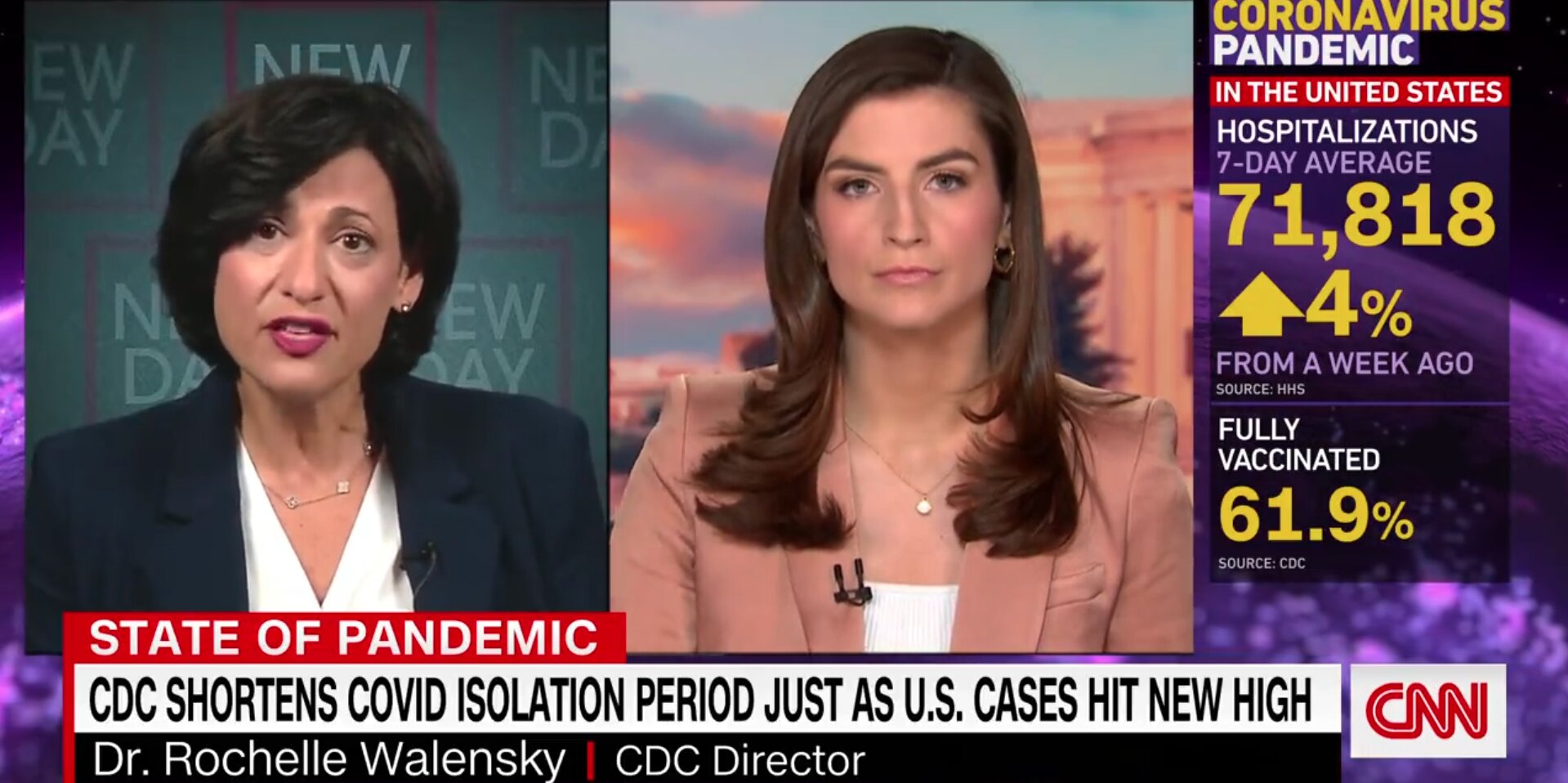Centers for Disease Control and Prevention (CDC) Director Rochelle Walensky says officials decided to shorten the isolation period for people with COVID-19 if they are asymptomatic in part due to concerns that they would not comply with the previous isolation guidelines.
During an interview on CNN on Wednesday, Walensky was asked by the network’s Kaitlan Collins, “How did the CDC settle on five days for everyone?”
Walensky responded by saying the data has shown that most of the transmission of the virus occurs during the first two days before an individual develops symptoms and then during the following two to three days.
“If you map that out, those five days account for somewhere between 85 to 90 percent of all transmission that occurs,” she said. “So we really wanted to make sure that during those first five days you were spending in isolation, that’s when most of it occurs.”
She added that officials ask individuals to wear masks after the five-day period.
Additionally, Walensky said that the CDC examined “behavioral science” and “what will people actually do” when they want to return to work after being infected.
Watch the video below:
“It really had a lot to do with what we thought people would be able to tolerate,” CDC Director Walensky says on why the CDC shortened the isolation period from 10 days to 5 days if you’re asymptomatic. Our full interview: pic.twitter.com/rO7blPFiPj
— Kaitlan Collins (@kaitlancollins) December 29, 2021Do you think this was a good decision?
Collins interjected, “So from what you’re saying, it sounds like this decision had just as much to do with business as it did with the science.”
“It really had a lot to do with what we thought people would be able to tolerate. We have seen relatively low rates of isolation for all this pandemic,” Walensky responded.
She continued, “Some science has demonstrated less than a third of people are isolating when they need to. We really want to make sure we have guidance in this moment where we were going to have a lot of disease that could be adhered to, that people were willing to adhere to, and that spoke to specifically when people were maximally infectious. So it really spoke to both behaviors as well as what people were able to do.”
When Collins asked why the CDC did not make the change earlier, Walensky said, “Our guidance was conservative before. It has said 10 days of isolation. But in the context of the fact that we were going to have so many more cases, many of those would be asymptomatic or mildly symptomatic; people would feel well enough to be at work, they would not necessarily tolerate being home, and they may not comply with being home.”
“This was the moment that we needed to make that decision and those changes,” she added.
Earlier this week, the CDC announced it “is shortening the recommended time for isolation from 10 days for people with COVID-19 to 5 days, if asymptomatic, followed by five days of wearing a mask when around others.”
























